20 Rare Rainforest Creatures and the Countries They Call Home
Rainforests are home to some of the most unusual and rare creatures on the planet. From colorful frogs to unique mammals and striking birds, these animals thrive in rich habitats found across different countries. Each one plays a role in its environment and stands out for its rarity, making them fascinating to learn about. Here are some remarkable rainforest creatures and the places they call home.
This post may contain affiliate links, which helps keep this content free. Please read our disclosure for more info.
Axolotl – Mexico
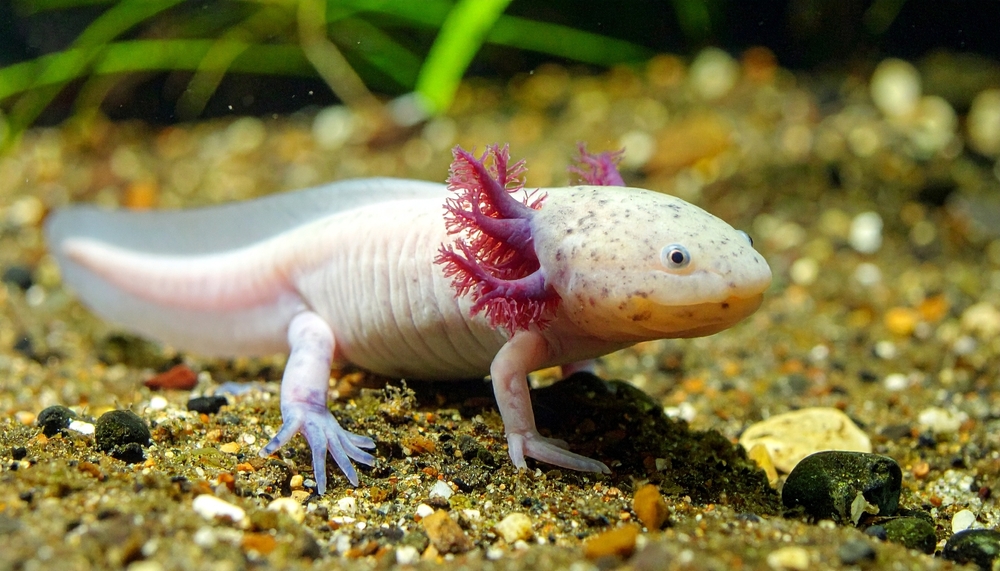
The axolotl is an unusual amphibian often called the “walking fish,” though it is actually a salamander. Native to lakes and wetlands near Mexico City, it is famous for retaining its juvenile features into adulthood, such as external gills. Unlike most amphibians, it spends its entire life underwater, rarely undergoing metamorphosis into a land-dwelling form.
Its population has declined dramatically due to habitat loss and water pollution. Despite this, axolotls hold cultural significance in Mexican history, being tied to Aztec mythology. Conservation programs and captive breeding efforts aim to protect them, though their survival in the wild remains uncertain.
Glass Frog – Costa Rica, Panama, Ecuador, Colombia
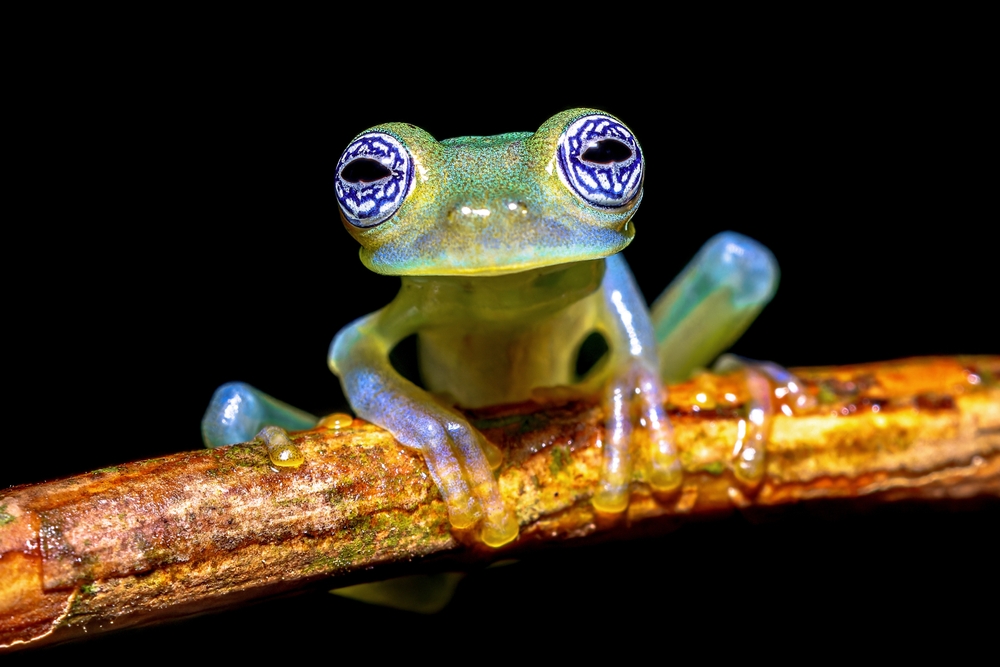
The glass frog gets its name from its transparent underbelly, which reveals internal organs like the heart and liver. This unique trait helps it blend into leaves in the rainforest canopy, offering camouflage against predators. These small amphibians are found near streams where they lay their eggs on foliage.
Males guard the eggs from threats such as fungus and insects, showing surprising parental behavior. When the eggs hatch, the tadpoles drop into the water below to continue development. Sadly, deforestation and climate change threaten many glass frog species, making their survival more difficult.
Harpy Eagle – Brazil, Guyana, Peru, Ecuador
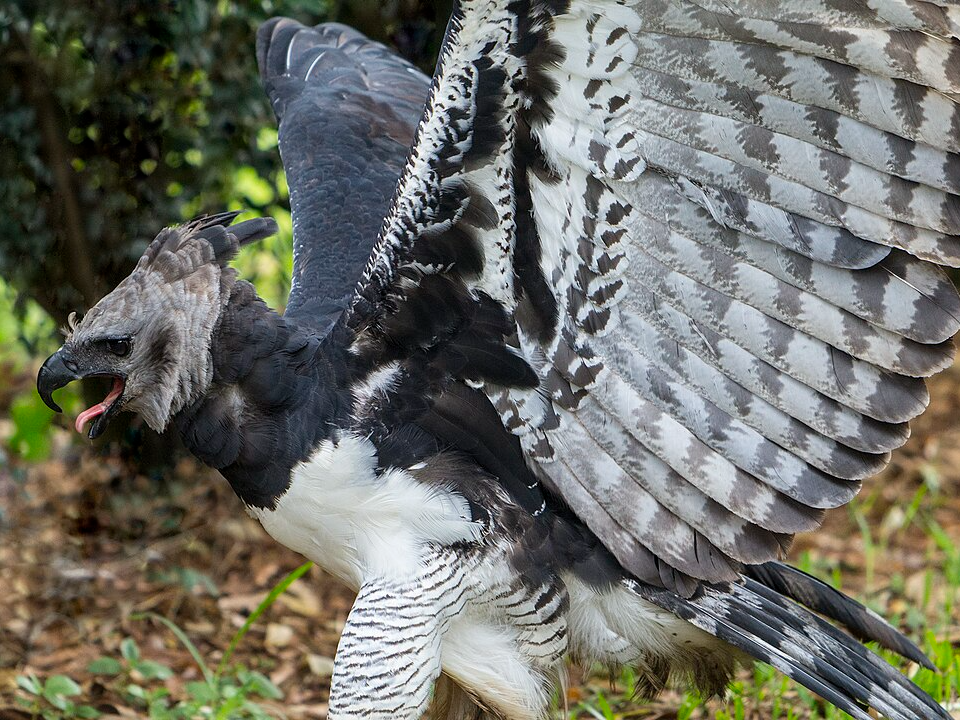
The harpy eagle is one of the largest and most powerful raptors in the world. With massive talons and strong wings, it preys on monkeys, sloths, and other tree-dwelling animals. Its striking appearance, marked by a feathered crest and piercing eyes, makes it a symbol of rainforest power.
Despite its size and strength, the harpy eagle’s population is shrinking due to habitat destruction. Large territories are needed for hunting, and deforestation often leaves them without enough space. Conservation groups work to protect their forest homes, highlighting the eagle’s role as a key predator in the ecosystem.
Okapi – Democratic Republic of the Congo
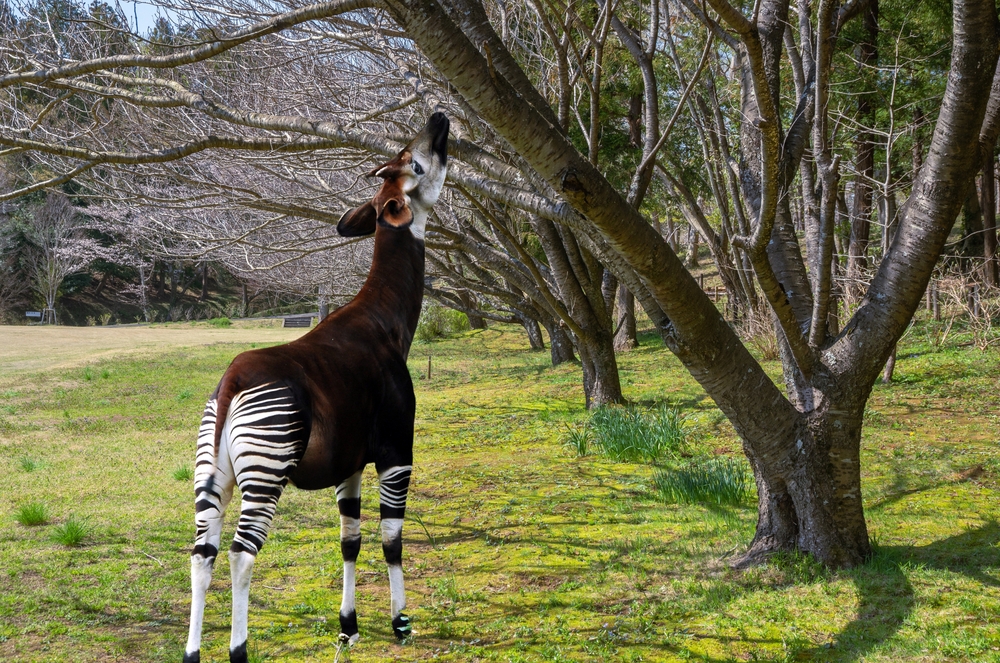
The okapi is a shy and elusive animal related to the giraffe. It has zebra-like stripes on its legs, which help it blend into dense undergrowth. Found only in the rainforests of the Democratic Republic of the Congo, the okapi was unknown to the outside world until the early 20th century.
Okapis are solitary creatures that rely on their sharp hearing to avoid predators. Unfortunately, illegal hunting and deforestation have placed them in danger. Their restricted range makes them especially vulnerable, leading to their classification as endangered.
Aye-Aye – Madagascar
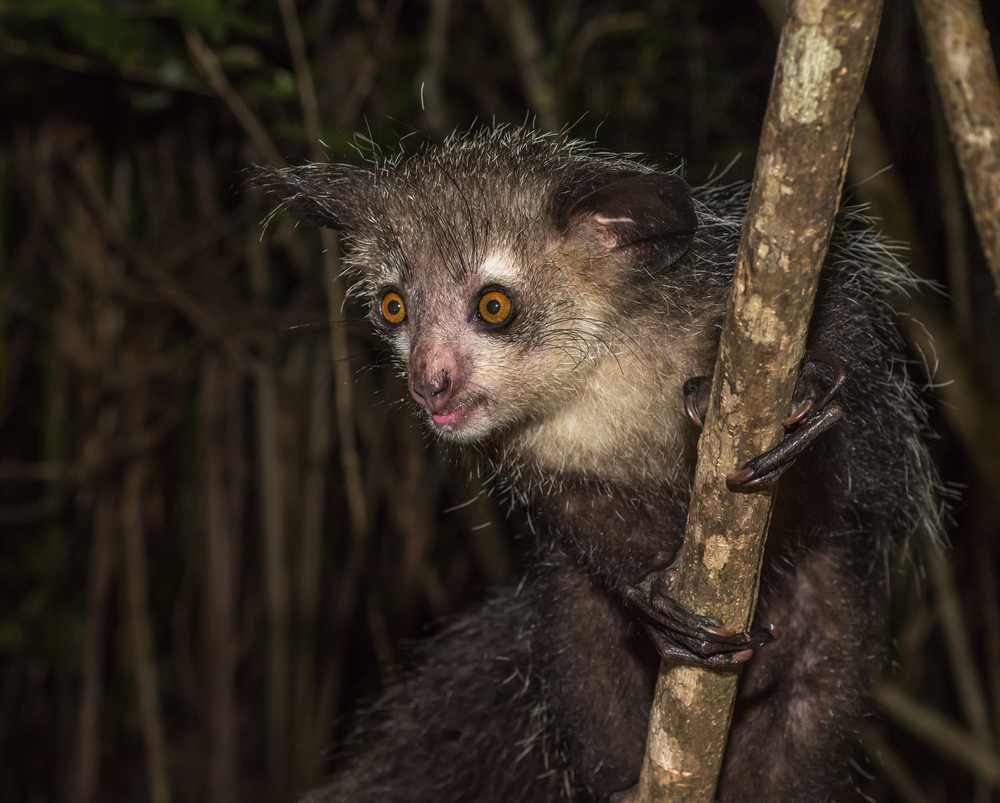
The aye-aye is one of the strangest-looking primates in the rainforest. It has large eyes, bat-like ears, and a long, thin finger used to tap on wood to locate insects. This unique feeding method is known as “percussive foraging.”
Living mostly in the treetops, the aye-aye is nocturnal and spends nights searching for food. Many local myths once considered it a bad omen, which caused people to kill them on sight. Today, conservation work continues to protect their shrinking rainforest habitat.
Red Panda – Nepal, Bhutan, Myanmar, China
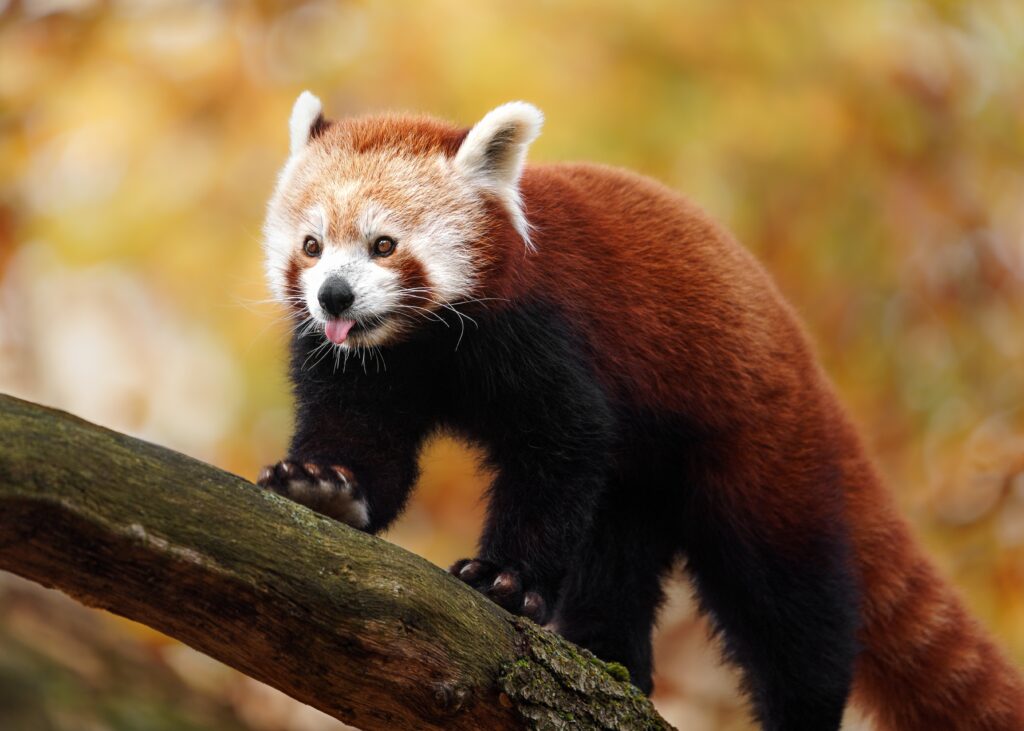
The red panda is a small, tree-dwelling mammal with reddish fur and a long, bushy tail. It lives in the forests of the Himalayas and southwestern China. Despite sharing a name with the giant panda, it is more closely related to raccoons and weasels.
Red pandas feed mainly on bamboo, though they also eat fruits and small animals. They are skilled climbers and spend much of their time in trees. Sadly, habitat loss and poaching have reduced their numbers, making them vulnerable in the wild.
Blue Poison Dart Frog – Suriname, Brazil, Guyana
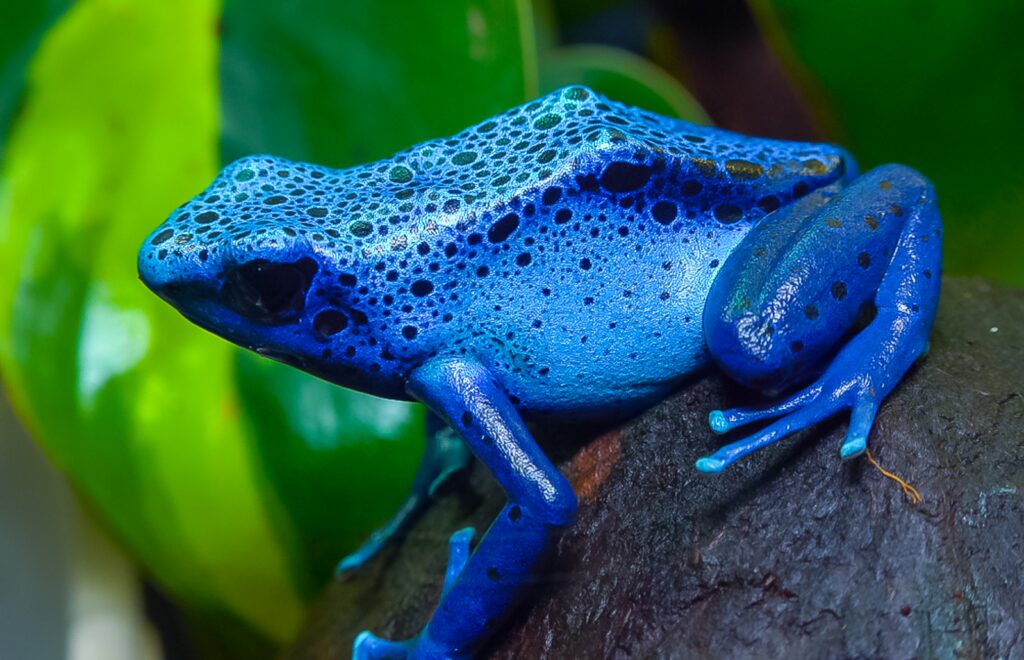
The blue poison dart frog is one of the most striking amphibians of the rainforest. Its bright blue skin warns predators of its toxicity, a defense developed from its diet of ants and insects. These frogs are small but highly noticeable in the dense undergrowth.
They thrive in humid rainforest environments near streams and ponds. In captivity, they lose much of their toxicity because their specialized diet is absent. Wild populations face pressure from deforestation and illegal pet trade.
Proboscis Monkey – Borneo (Indonesia, Malaysia, Brunei)
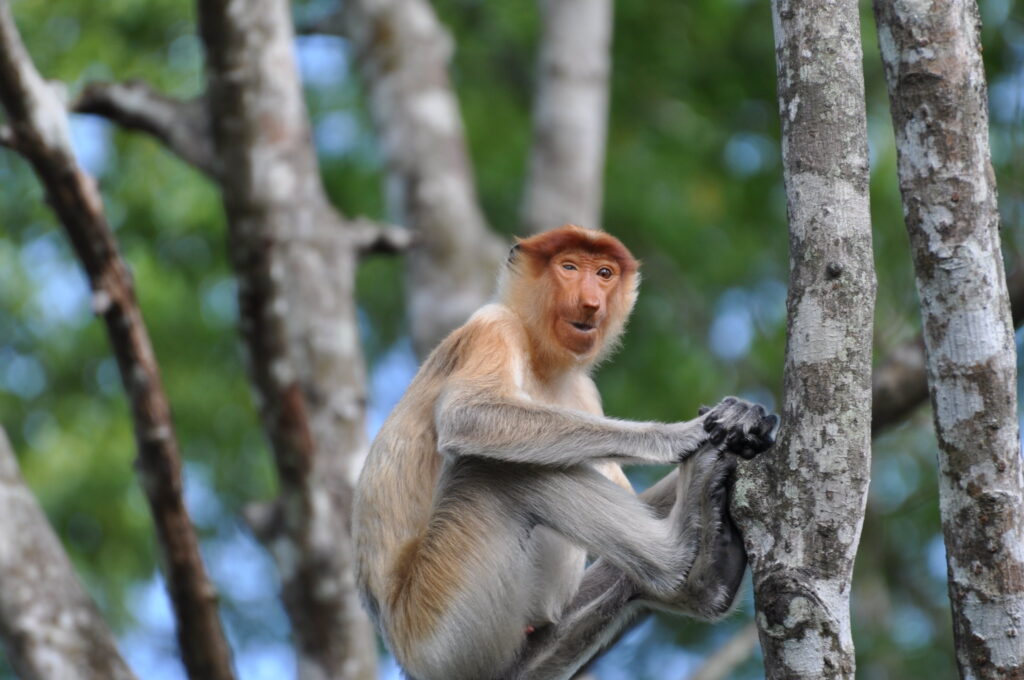
The proboscis monkey is famous for its large, drooping nose, especially in males. Found only on the island of Borneo, these monkeys spend much of their lives in mangrove forests and lowland rainforests. Their long limbs and webbed toes make them excellent swimmers.
Proboscis monkeys live in groups, often gathering near rivers and coastlines. Unfortunately, their habitats are rapidly disappearing due to palm oil plantations and logging. They are listed as endangered, with conservation efforts focused on protecting Borneo’s remaining forests.
Pangolin (Tree Pangolin) – Cameroon, Ghana, Nigeria
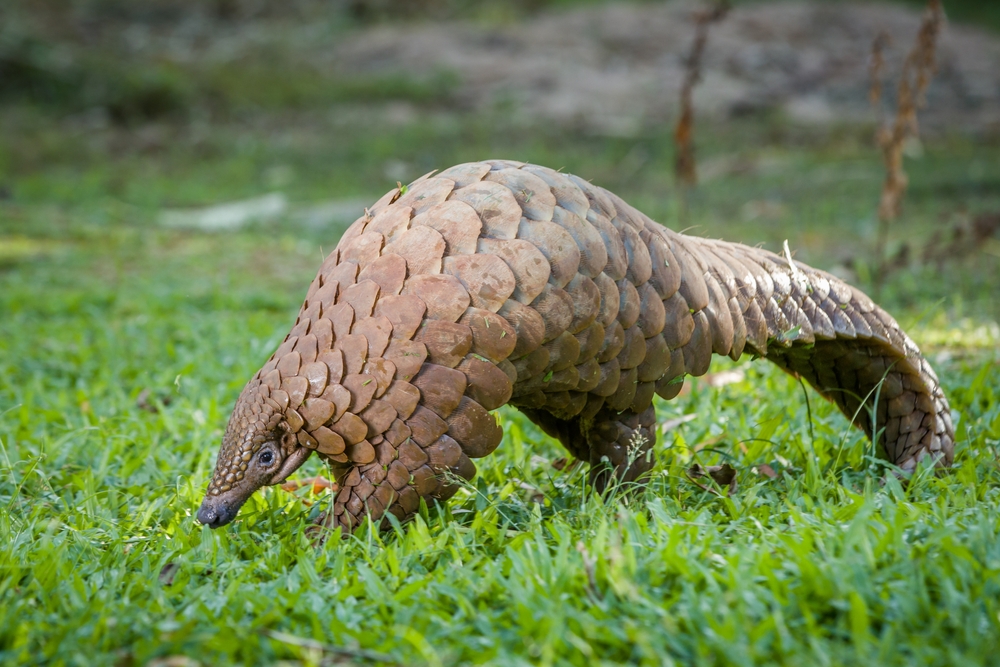
Pangolins are sometimes called “scaly anteaters” because of their overlapping protective scales. The tree pangolin is a species adapted to climbing, using its prehensile tail to grip branches. It feeds mainly on ants and termites, using a long sticky tongue to capture them.
Sadly, pangolins are among the most trafficked animals in the world due to demand for their meat and scales. This heavy exploitation, combined with habitat loss, has left populations in critical decline. Conservationists are working hard to raise awareness and protect remaining pangolins.
Kakapo – New Zealand
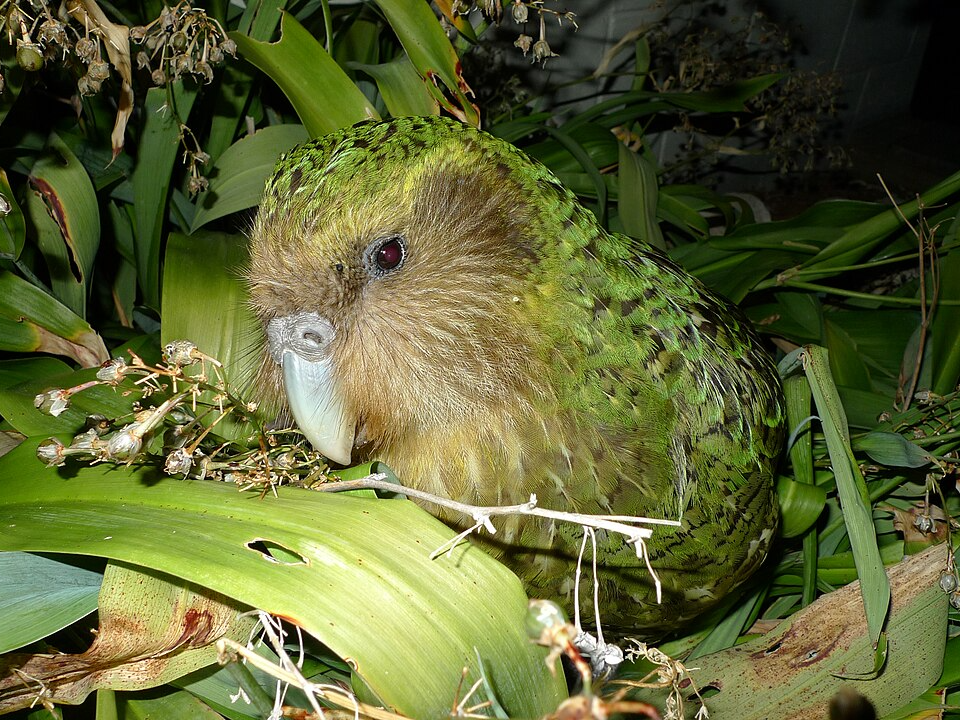
The kakapo is a nocturnal parrot that cannot fly, making it unique among rainforest and forest birds. It is large, with green mottled feathers that provide camouflage against vegetation. Historically widespread in New Zealand, it now survives only thanks to intensive conservation programs.
With fewer than 300 individuals, the kakapo is considered critically endangered. Conservationists carefully monitor breeding and provide safe islands free of predators. The story of the kakapo highlights both the fragility of rare species and the determination to save them.
Potoo Bird – Brazil, Colombia, Ecuador, Venezuela
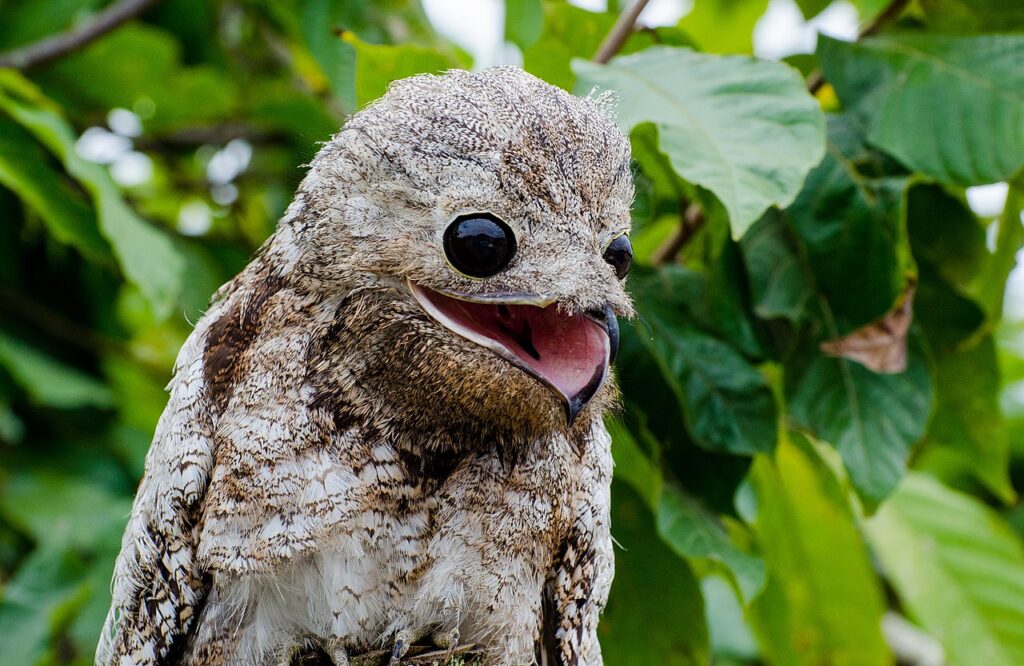
The potoo bird is known for its excellent camouflage, often resembling a broken tree branch. Its wide mouth helps it catch insects during night flights. Despite its eerie appearance, it is harmless and spends most of the day perched motionless.
Potoos have haunting calls that echo through the rainforest at night. They are rarely seen due to their stillness and cryptic plumage. Although not currently endangered, they face risks from ongoing deforestation in South America.
Quetzal – Guatemala, Honduras, Costa Rica, Panama
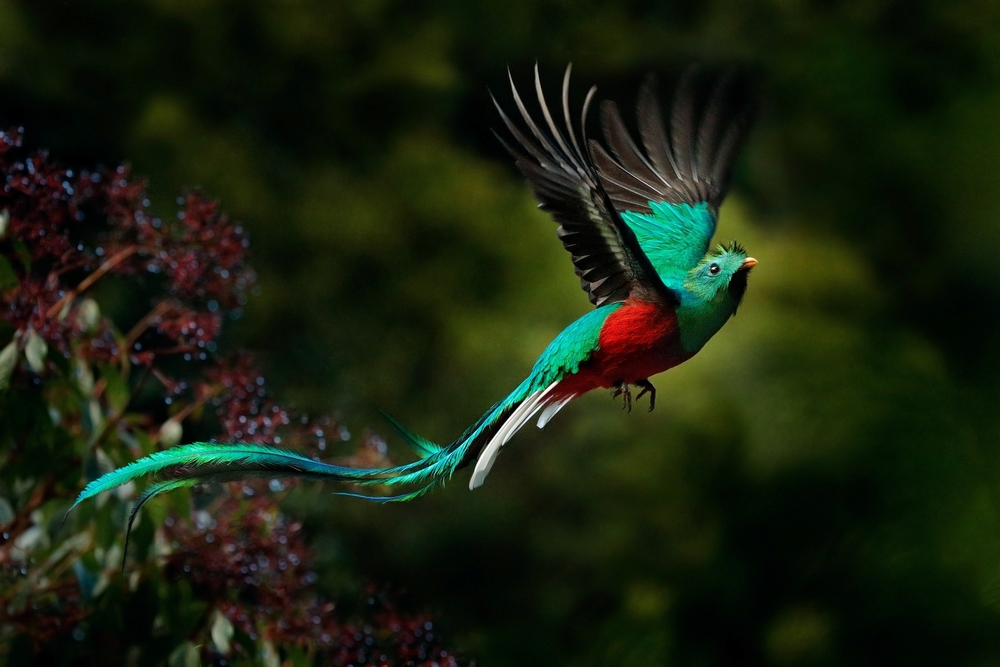
The resplendent quetzal is a brilliantly colored bird with shimmering green feathers and a striking red chest. Males grow long, flowing tail feathers during the breeding season, making them one of the most beautiful birds in the world. They inhabit cloud forests across Central America.
Quetzals feed on fruits, insects, and small creatures. They play an important role in seed dispersal, helping rainforest plants regenerate. Sadly, habitat loss has reduced their range, and they are considered near-threatened.
Satanic Leaf-Tailed Gecko – Madagascar
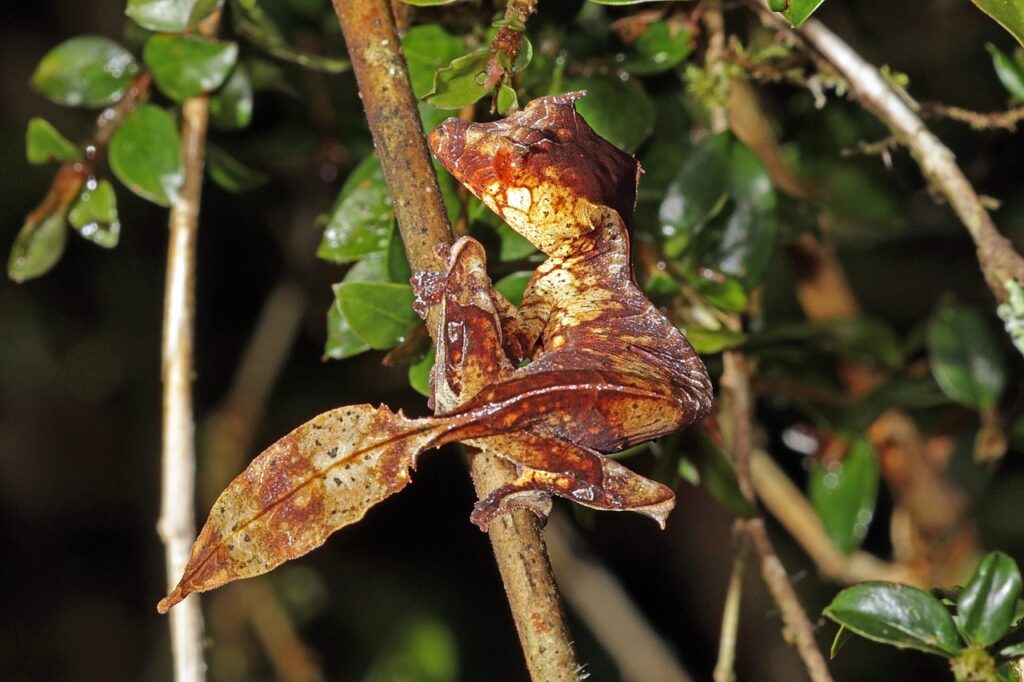
This gecko has a body that mimics dead leaves, complete with ragged edges and tail veins. Found in Madagascar’s rainforests, it relies on camouflage to hide from predators during the day. At night, it becomes active and hunts for insects.
Its appearance has made it a favorite among reptile enthusiasts. Unfortunately, the pet trade and deforestation threaten its survival. Protecting Madagascar’s forests is key to maintaining its population.
Slender Loris – Sri Lanka, Southern India
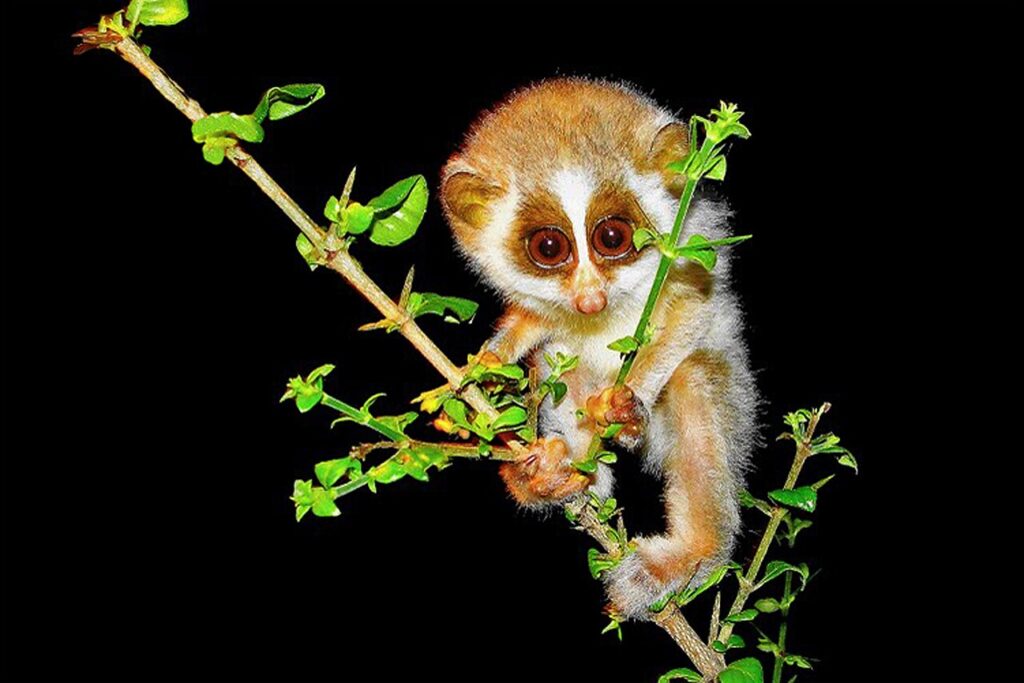
The slender loris is a small, nocturnal primate with large round eyes. It moves cautiously through trees, searching for insects, small reptiles, and fruits. Its delicate frame and slow movements make it well-suited for a secretive life in dense forests.
Unfortunately, habitat destruction and hunting for traditional medicine have placed them in danger. Conservationists stress the importance of preserving their forests and educating local communities. Despite their fragile appearance, these animals are resilient survivors when given a chance.
Shoebill Stork – Uganda, Zambia, South Sudan
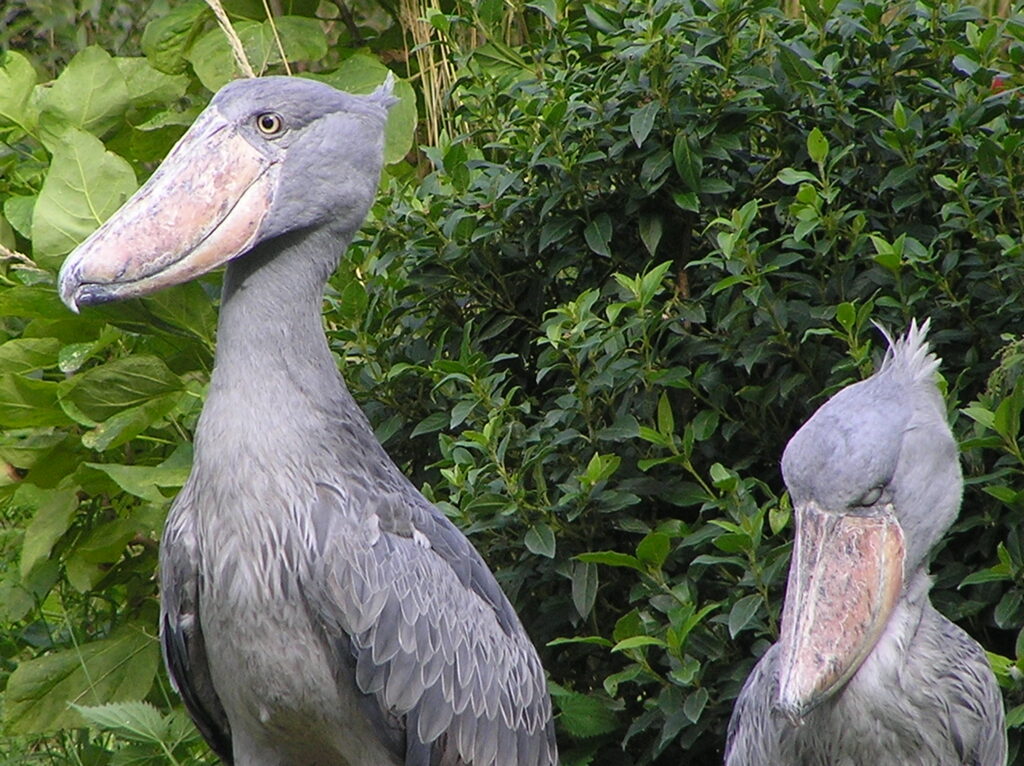
The shoebill stork is famous for its enormous shoe-shaped bill. It hunts fish, frogs, and even baby crocodiles in swampy rainforest edges. Standing tall with a prehistoric look, it is unlike any other bird in its environment.
Shoebills are solitary and prefer quiet wetlands. Because of habitat loss and disturbance from humans, they are classified as vulnerable. Protection of swamps and marshes is vital for their continued survival.
Pink River Dolphin – Brazil, Peru, Bolivia (Amazon Basin)
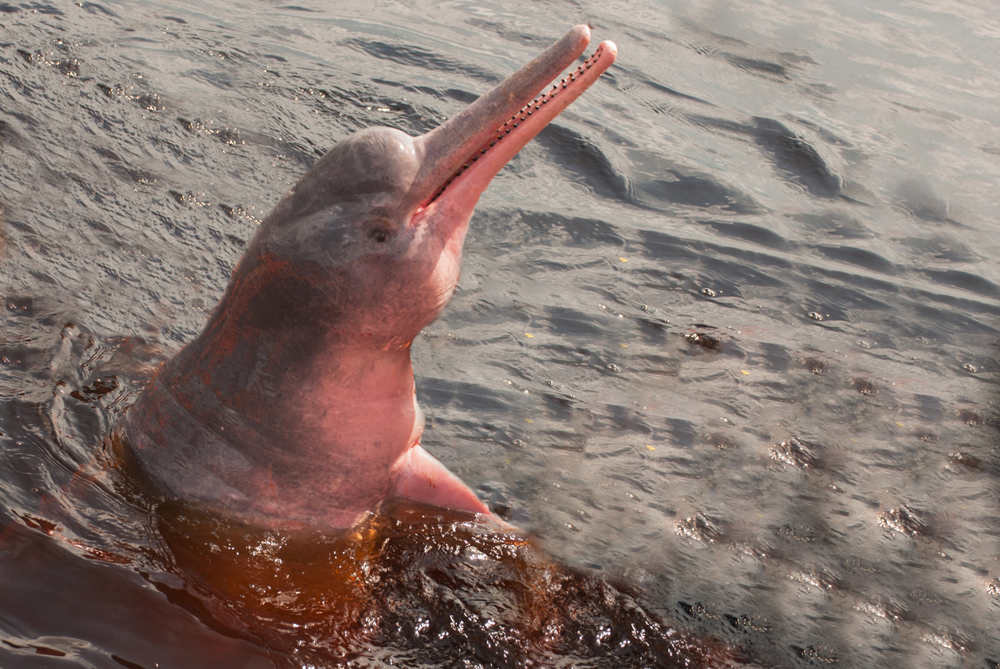
The pink river dolphin, also known as the boto, lives in the freshwater rivers of the Amazon. Its pinkish hue becomes more intense as it matures. These dolphins are intelligent and often display playful behavior, sometimes interacting with fishermen.
Their habitats are threatened by pollution, dams, and deforestation along river systems. They hold cultural significance in local folklore, often portrayed as mystical beings. Efforts are underway to protect river ecosystems to keep these dolphins safe.
Golden Snub-Nosed Monkey – China
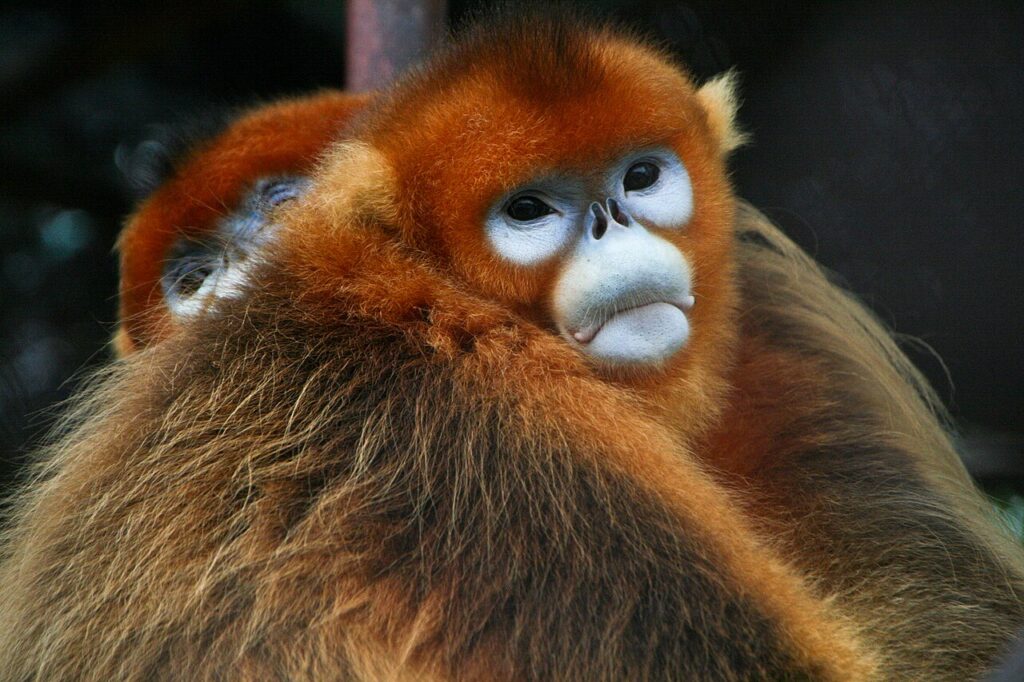
This monkey is easily recognized by its golden fur and blue face. Living in the mountain forests of central China, it is adapted to cold climates. Groups of these monkeys can be large, often numbering over a hundred individuals.
Despite their striking appearance, they are endangered due to habitat loss and fragmentation. Conservation reserves in China have been created to protect them. Their survival depends on continued protection of remote forest areas.
Sun Bear – Malaysia, Thailand, Indonesia (Borneo, Sumatra)
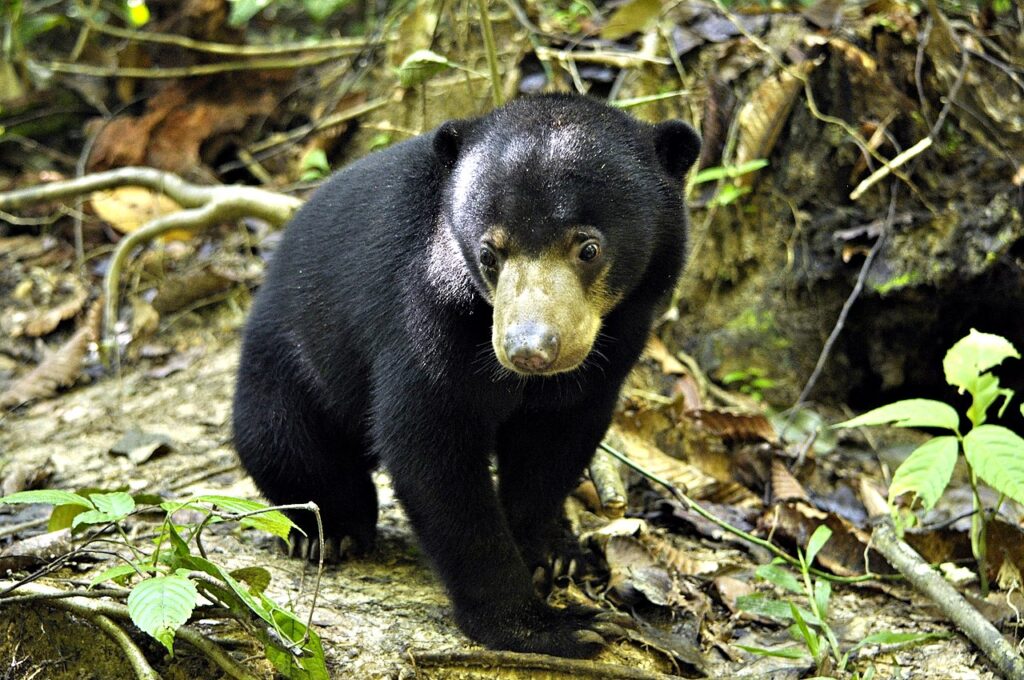
The sun bear is the smallest bear species in the world. It has short black fur and a distinct golden marking on its chest. These bears live in the tropical rainforests of Southeast Asia.
They are excellent climbers and feed on honey, insects, and fruits. Unfortunately, habitat destruction and poaching for bile farming have placed them at risk. Conservationists emphasize the importance of protecting Southeast Asian rainforests to save the sun bear.
Victoria Crowned Pigeon – Papua New Guinea
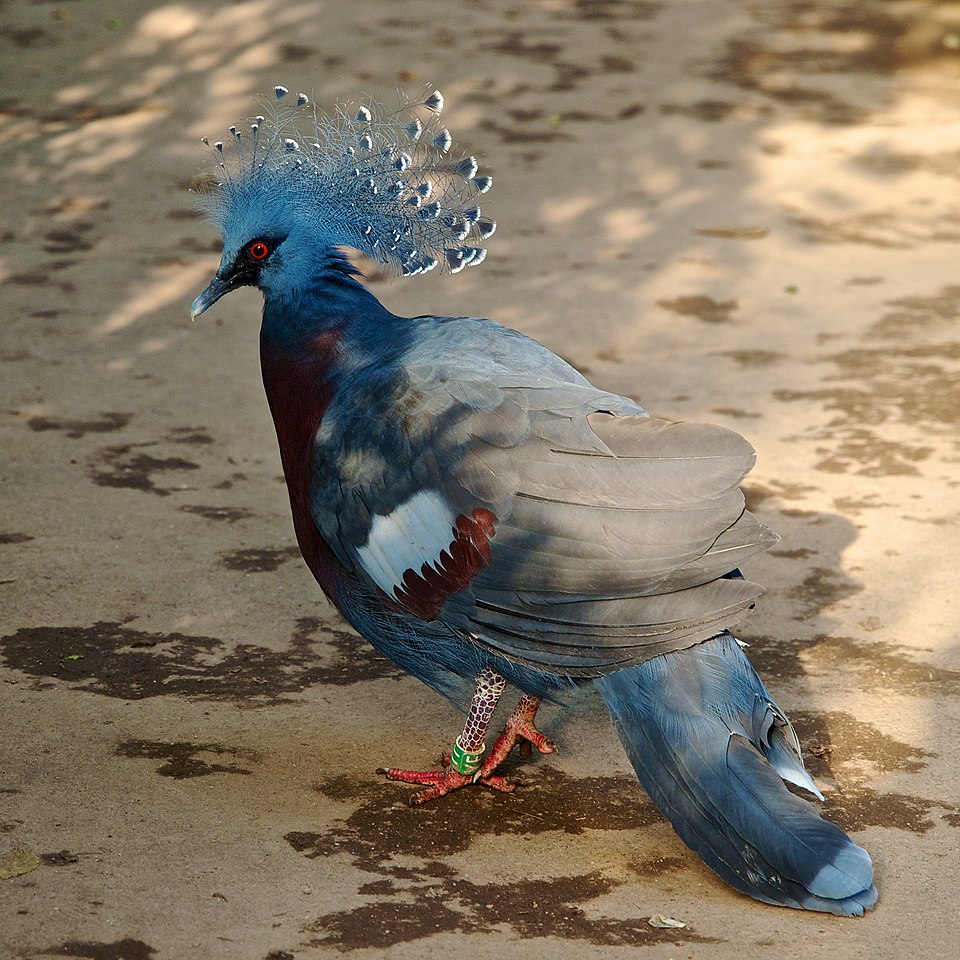
This pigeon is one of the largest in the world, with striking blue plumage and an elegant crown of feathers. Found in the lowland rainforests of Papua New Guinea, it is admired for its beauty. Unlike most pigeons, it prefers walking on the forest floor.
Victoria crowned pigeons live in small flocks and feed on fruits and seeds. Hunting and deforestation threaten their numbers, as they are often targeted for their feathers. Conservation programs work to maintain populations in protected areas.
Gooty Sapphire Tarantula – India
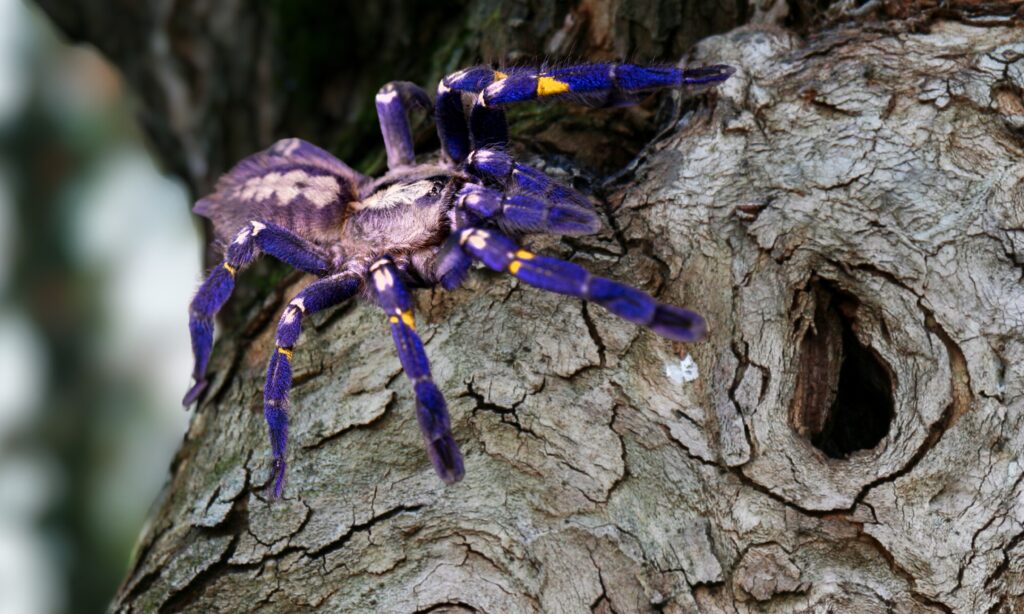
The Gooty sapphire tarantula is a striking blue spider native to a small forest reserve in Andhra Pradesh, India. Its metallic blue coloration makes it one of the most beautiful tarantulas in the world. It prefers living in tree holes, where it builds silk-lined retreats.
Sadly, this species is critically endangered due to its extremely limited range. Illegal pet trade and habitat loss add to the pressure on wild populations. Protection of its forest habitat is essential for its survival.
This article originally appeared on Avocadu.
